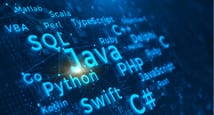- Source code Vs bytecode Vs machine code, Compiler Vs Interpreter, C/C++, Java Vs Python.
Advanced Data Science and AI Course
Quick Facts
| particular | details | ||||
|---|---|---|---|---|---|
|
Medium of instructions
English
|
Mode of learning
Self study, Virtual Classroom
|
Mode of Delivery
Video and Text Based
|
Frequency of Classes
Weekdays
|
Course overview
The Advanced Data Science and AI is a certification course designed for students and aspiring data scientists seeking to elevate their skills to the next level. The course goes beyond the fundamentals, offering an in-depth exploration of advanced concepts and methodologies that are pivotal in today's rapidly evolving technological landscape. The certification course will make students gain hands-on, practical experience that bridges the gap between theory and real-world application.
The Advanced Data science and AI training covers a wide spectrum of topics, including advanced machine learning algorithms, deep neural networks, natural language processing, and reinforcement learning. The expert instructors, industry practitioners, and thought leaders in the certification course will guide students through the details of designing and implementing sophisticated AI solutions.
The highlights
- Offered by Skillslash
- Completion Certificate
- Real work experience certificate
- Hands-on learning experience
- 350+ live sessions
- 15+ industry projects
Program offerings
- Course readings
- Practical learning
Course and certificate fees
Fees information
The Advanced Data Science and AI certification fee for the Pro course is Rs 65,000 (+GST) and for the Pro Max course, it is Rs 1,20,000 (+GST). Candidates are required to pay for the course in the payment gateway window.
Advanced Data Science and AI Fee Structure
Course Details | Total Fees |
Course Fee (Pro) | Rs 6,5000 |
Course Fee (Pro Max) | Rs 1,20,000 |
certificate availability
Yes
certificate providing authority
Microsoft Corporation +1 more
Who it is for
Candidates who want to gain a comprehensive understanding of advanced data science and AI concepts, equipping students with the expertise needed to tackle complex challenges in the field. The Advanced Data Science and AI certification course is designed for:
Eligibility criteria
Certification Qualifying Details
To qualify for the Advanced Data Science and AI certification course by Skillslash, candidates are required to complete the full course and the projects.
What you will learn
With the Advanced Data Science and AI certification syllabus, students will emerge with a profound mastery of the most advanced concepts and techniques in the fields of data science and artificial intelligence. They will acquired a deep understanding of sophisticated machine learning algorithms, including those related to deep neural networks, natural language processing, and reinforcement learning.
Upon completion of the Advanced Data Science and AI certification course, students will gain practical, hands-on experience through industry-relevant projects will equip them with the skills to design and implement robust AI solutions, providing them with a competitive edge in the dynamic landscape of technology. Additionally, this certification course places a strong emphasis on ethical considerations and the responsible deployment of AI technologies.
The syllabus
Module 0 Introduction
Chapter 1: Introduction to Programming ( 3 hrs )
Chapter 2: code editors basics (1 hrs)
- Different type of code editors in python, Introduction to Anaconda and IDEs
Chapter 3: python basics (1 hrs)
- Variable Vs Identifiers, Strings Operators Vs Operand, Procedure oriented Vs Modular programming.
Chapter 4: statistics basics & probability (1 hrs)
- Measures of Central Tendency & dispersion, Inferential statistics and Sampling theory.
Module 1 - Programming Essentials
Chapter 1: Programming Introduction ( 3 hrs )
- Different types of Programming Language, What is Compiler?, What is an Interpreter?
Chapter 2: Python Introduction (1 hrs)
- How a Python Program runs on our system?, Features of Python Memory Management in Python, Different Implementations of Python.
Chapter 3: Conditional and loops (1 hrs)
- Conditional Statement, Loop Statement.
Chapter 4: Python programming components
- Linting, Formatting, Understanding Python code, Command Line Arguments, Python Operators
Chapter 5: Function
- Working with functions, Parameters vs Arguments, Namespace vs Scope, Function call vs Function referencing
Chapter 6: Expection handeling
- Introduction to Exception Handling, Type of Errors, Nestedtry-except block & Default except for block.
Chapter 7: Modules in python
- Introduction to Modular Programming, Importing Modules and different import statement, Types of Modules.
Chapter 8: File handeling
- Use of File Handling?, Type of Files, File Operation, What is File Handling?, Why do we need File Handling?, Type of Files, File Operation
Chapter 9: Regular expression
- Intro & use of Regular Expression?, Regex module & important methods,Regex pattern and it’s interpretation.
Chapter 10: Numpy in python
- Intro & use of numpy, What is an array?, Array Operations using Numpy, Numpy and Scipy, Numpy and Pandas
Chapter 11: Pandas in python
Numpy vs Pandas, Exporting Dataframe to CSV and Excel, EDA using Pandas
Chapter 12: MatplotLib
- Lines & markers, Figures, Watermark, Shapes, Polygons and arrows Color maps, Autocorrelation study
Chapter 13: Seaborn
- Working with seaborn on titanic dataset, Introduction & installation, Controlling figure asthetics, Different plots in seaborn
Chapter 14: Other visualisation libraries
- Plotly, Pygal, Geopltlib etc.
Module 2 - Applied Statistics
Chapter 1:- Probability theory and Statistical Inferences ( 4 hrs )
- Introduction to Probability Principles, Random Variables and Probability principles, Discrete Probability Distributions - Binomial, Poisson etc, Continuous Probability Distributions - Gaussian, Normal, etc, Joint and Conditional Probabilities, Bayes theorem and its applications, Central Limit Theorem and Applications
Chapter 2: Statistics Foundations (1 hrs)
- Elements of Descriptive Statistics, Measures of Central tendency and Dispersion, Inferential Statistics fundamentals, Sampling theory and scales of measurement, Covariance and correlation
Chapter 3: Hypothesis Testing and its Applications (1 hrs)
- Basic Concepts - Formulation of Hypothesis, Making a decision, Advanced Concepts - Choice of Test - t test vs z test, Evaluation of Test - P value and Critical Value approach, Confidence Intervals, Type 1 and 2 errors
Chapter 4: Exploratory Data Analysis and the Art of Storytelling (1 hrs)
- Ingest data, Data cleaning, Outlier detection and treatment, Missing value imputation, Capstone project for Business Analysis
Module 3 - Advance Machine Learning
Chapter 1: A primer on Machine Learning ( 3 hrs )
- Types of Learning - Supervised, Unsupervised and Reinforcement, Statistics vs Machine Learning, Types of Analysis - Descriptive, Predictive, and Prescriptive, Bias Variance Tradeoff - Overfitting vs Underfitting
Chapter 2: Regression
- Correlation vs Causation, Simple and Multiple linear regression, Linear regression with Polynomial features, What is linear in Linear Regression?, OLS Estimation and Gradient descent, Model Evaluation Metrics for regression problems - MAE, RMSE, MSE, and MAP
Chapter 3: Classification
- Introduction to Classification problems, Logistic Regression for Binary problems, Maximum Likelihood estimation, Data Imbalance and redressal methodology, Up sampling, Down sampling and SMOTE
Chapter 4: Clustering-K means
- Introduction to Unsupervised Learning, Hierarchical and Non-Hierarchical techniques, K Means Algorithms - Partition based model for clustering, Model Evaluation metrics – Clustering
Chapter 5: KNN
- Introduction to KNNs, KNNs as a classifier, Non-Parametric algorithms and Lazy learning ideology, Applications in Missing value imputes and Balancing datasets
Chapter 6: Advance Regression Model
- Introduction to regularization, Understanding ridge regression, Working with Lasso regression, Tackling multicollinearitywith regression
Chapter 7: Decision Trees
- Nonlinear models for classification, Intro to decision trees, Why are they called Greedy Algorithms?, Information Theory - Measures of Impurity
Chapter 8: Ensemble Techniques
- Introduction to Bagging as an Ensemble technique, Bootstrap Aggregation and Out of Bag error, Random Forests and its Applications in Feature selection, How Bagging overcomes the overfitting problem?, Scent and Boosting, How Boosting overcomes the Bias - Variance Tradeoff, Gradient Boosting and Xgboost as regularised boosting
Chapter 11: Time-series Analysis
- Intro to Time series, Autocorrelation and ACF/PACF plots, The Random Walk model and Stationarity of Time Series, Tests for Stationarity - ADF and Dickey- Fuller test, AR, MA, ARIMA, SARIMA models, A regression approach to time series forecasting.
Chapter 12: Machine Learning Pipeline & auto ML
Feature engineering & selection techniques, Principal Component Analysis, Linear Discriminant Analysis, Serving the model via Rest API & Keras.
Module 4 - Deep Learning
Chapter 1: Neural Networks
Introduction to Neural Networks, Layered Neural networks, Activation Functions and their application, Back propagation and Gradient Descent
Chapter 2: Tensor Flow
Introduction to TensorFlow, Working with TensorFlow, Linear regression with TensorFlow, Logistic regression with TensorFlow
Chapter 3: Deep Neural Networks
Designing a deep neural network, Optimal choice of Loss Function, Tools for deep learning models - Tflearn and Pytorch, The problem of Exploding and Vanishing gradients
Chapter 4: Convolutional Neural networks
Architecture and design of a Convolutional network,Deep convolutional models & image augmentation
Chapter 5: Recurrent Neural networks and LSTMs.
RN N & LSTM structure, Bidirectional RNNs and Applications on Sequential data, Advanced Time series forecasting using RNNs with LSTMs, LSTMs vs GRUs.
Chapter 6: Restricted Boltzmann Machines and Autoencoders.
Intro to RBMs, Autoencoders, Application of RBMs in Collaborative filtering, Autoencoders for Anomaly detection, Capstone Project -Self-driving cars, Facial recognization.
Module 5 - NLP
Chapter 1:- Language modelling
Intro to the NLTK library, N-gram Language models: Perplexity and Smoothing, Introduction to Hidden Markov models, Viterbi algorithms, MEMMs and CRFs for named entity recognition, Neural Language models, Application of LSTMs to predict the next word.
Chapter 2: Vector space models
Explicit and Implicit matrix factorization, Word2vec and Doc2vec models.
Chapter 3: Sequence to Sequence tasks
Introduction to Machine translation, Natural language processing, NLP with machine translation for text analysis, Word Alignment models, Encoder-Decoder Architecture, How to implement a conversational Chatbot
Chapter 4: Capstone Project
Fully functional chatbot, Front end backend and deployment process for chatbot
Module 6- Reinforcement Learning
- What is RL? – High-level overview
- The multi-armed bandit problem and the explore-exploit dilemma
- Markov Decision Processes (MDPs)
- Dynamic Programming
- Monte Carlo Control
- Temporal Difference (TD) Learning (Q-Learning and SARSA)
- Approximation Methods (i.e., how to plug in a deep neural network or other differentiable model into your RL algorithm)
Module 7- Computer Vision
- Mathematics for Computer
- Vision Intro to Transfer Learning
- R-CNN and RetinaNet models for Object detection using Tensorflow
- FCN architecture for Image segmentation
- IoU and Dice score for model evaluation
- Face detection with OpenCV
Module 8 - DSA ( 12 Weeks )
- Array basics, Problem solving techniques with example
- Time Complexity & Bit manipulations
- Sorting, Searching & String Algorithms
- Linked list
- Two pointer techniques
- Stack & Queue - Implementation & Problems.
- Tree, Trie, Ternary Search tree
- Recursion & Greedy Algorithms
- Combinatorial problems with backtracking
- Hashing
- Graph Theory
- Dynamic Programming
Module 9 - TOOLS
Chapter 1: Excel Fundamentals
Introduction to Excel interface, Customizing Excel Quick Access Toolbar, Structure of Excel Workbook, Excel Menus, Excel Toolbars: Hiding, Displaying, and Moving Toolbars, Switching Between Sheets in a Workbook, Inserting and Deleting Worksheets, Renaming and Moving Worksheets, Protecting a Workbook. Hiding and Unhiding Columns, Rows and Sheets, Splitting and Freezing a Window. Inserting Page Breaks, Advanced Printing Options, Opening, saving and closing, Excel document, Common Excel Shortcut Keys, Quiz.
Chapter 2: Worksheet Customization
Adjusting Page Margins and Orientation, Creating Headers, Footers, and Page Numbers, Adding Print Titles and Gridlines, Formatting Fonts & Values, Adjusting Row Height and Column Width, Changing Cell Alignment, Adding Borders, Applying Colours and Patterns, Using the Format Painter, Formatting Data as Currency Values, Formatting Percentages, Merging Cells, Rotating Text, Using Auto Fill, Moving and Copying Data in an Excel Worksheet, Inserting and Deleting Rows and Columns.
Chapter 3: Images and Shapes into Excel Worksheet
Inserting Excel Shapes, Formatting Excel Shapes, Inserting Images, Working with Excel SmartArt.
Chapter 4: Basic work on Excel
Entering and selecting values. Using numeric data in excel, Working with forms menu, cell references, conditional,Formatting and data validation, Finding and replacing information from worksheet, Inserting & deleting cells, rows and columns.
Chapter 5: Excel Formulae
Creating basic formulae in excel, Implementing excel formulae in worksheet, Relative cell referencing, Absolute cell referencing, Relative vs Absol ute cell references in formulae, Understanding the order of operation, Entering and Editing text, Fixing errors in your formulae,Formulae with several operators, Formulae with cell ranges, Quiz.
Chapter 6: Excel Functions
Working with functions like SUM(), AVERAGE() etc, Adjacent cells error in excel calculations, Use of AutoSum & autofill command, Quiz
Chapter 7: Working with Charts and Graphs
Creating a column chart, Working with the excel chart ribbon, Adding and modifying data on an Excel chart, Formatting an excel chart, Moving a chart to another worksheet, Resizing a chart, Changing a chart’s source data, Adding titles, gridlines and a data table, Formatting a data series and chart axis, Using fill effects, Changing a chart type and working with pie charts, Quiz.
Chapter 8: Support Vector Machines
Intro to Pivot Tables, Structuring Source Data for Analysis in Excel, Creating a PivotTable, Exploring Pivot Ta ble Analyse & Desig n Options, Working with and on pivot tables, Dealing with Growing Source Data, Enriching data with Pivot table calculated values & fields, Formatting and charting a PivotTable, Pivot Table Case Study, Quiz
Chapter 9: Basic Macros
Introduction to macros, Automating Tasks with Macros, Recording a Macro, Playing a Macro, Assigning a Macro a Shortcut Key.
Chapter 10: Introduction to SQL
What is a Database?, Why SQL?, All about SQL Difference between SQL & MongoDB, Different Structured Query languages Why MySQL?, Installation of MySQL, DDL, SQL Keywords, DCL, TCL, Database Vs Excel Sheets, Relational and database schema, Foreign and Primary Keys, Database manipulation, management, and administration.
Chapter 11: No SQL Databases
Topics - What is HBase?, HBase Architecture, HBase Components, Storage Model of HBase, HBase vs RDBMS, Introduction to Mongo DB, CRUD, Advantages of MongoDB over RDBMS, Use cases, First Step in SQL Database, Creating Database, Dropping Database, Using Database, Introduction to Tables, Data types in SQL, Creating a table, Dropping table, Coding best practices in SQL.
Chapter 12: SQL Databases
Introduction to database, Creating Data base, Dropping Database, Using Database, Introduction to Tables, Data types in SQL, Use case of different data, Working with tables, Coding best practices in SQL
Chapter 13: SQL Fundamantel Statement
SELECT Statement, COUNT, SELECT WHERE, ORDER BY.
IN, NOT IN, NULL and NOT_NULL, Comparison Operators (=, >, >=, <=), MySQL Warnings (Understand and Debug).
Chapter 14: Refining Selection
SELECT DISTINCT, LIKE, NOT LIKE, ILIKE, LIMIT, BETWEEN, BETWEEN – AND
Chapter 15: SQL Statements & Functions
Multiple INSERT, INSERT INTO, GROUP BY HAVING, WHERE vs HAVING, UPDATE, DELETE, AS, EXISTS-NOT EXISTS, Aggregator functions, Application of group by, Count function, MIN and MAX, Sum Function, Avg Function.
Chapter 16: JOINS & Functions
Introduction to JOINs, Types of JOINS, Usage of different types of JOINS, Loading Data, Usage of string functions like; CONCAT, SUBSTRING etc, INNER join, OUTER join, Full join, Left Join, Right Join, UNION.
Chapter 17: Advance SQL
Local, Session, Global Variables, Timestamps and Extract, CURRENT DATE & TIME, EXTRACT, AGE, TO_CHAR, Mathematical Functions and Operators
CEIL & FLOOR, POWER, RANDOM, ROUND, SETSEED, Operators and their precedence.
Chapter 18: Basics and CRUD Operation
Databases, Collection & Documents, Shell & MongoDB drivers, What is JSON Data, Create, Read, Update, Delete, Working with Arrays, Understanding Schemas and Relations.
Chapter 19: Mongo DB
What is MongoDB?, Characteristics, Structure and Features, MongoDB Ecosystem, Installation process, Connecting to MongoDB database, What are Object Ids in MongoDb, Data Formats in MongoDB, MongoDB Aggregation Framework, Aggregating Documents, What are MongoDB Drivers? Finding, Deleting, Updating, Inserting Elements.
Chapter 20: Introduction To Tableau
What is TABLEAU?, Why to use TABLEAU?, Installation of TABLEAU, Connecting to data source, Navigating Tableau, Creating Calculated Fields, Adding Colours, Adding Labels and Formatting, Exporting Your Worksheet, Creating dashboard pages, Different charts on TABLEAU (Bar graphs, Line graphs, Scatter graphs, Crosstabs, Histogram, Heatmap, Tree maps, Bullet graphs, etc.), Dashboard Tricks, Hands on exercises.
Chapter 21: Data Types in Tableau
Pre-attentive processing, Length and position, Reference Lines, Parameters, Tooltips, Data over time, Implementation, Advance table calculations, Creating multiple joins in Tableau, Relationships vs Joins, Calculated Fields vs Table calculations, Creating advanced table calculations, Saving a Quick table calculation, Writing your own Table calculations, Adding a second layer moving average, Trendlines for power-insights.
Chapter 22: Mapping and Analytics
Getting started with visual analytics, Geospatial data, Mapping workspace, Map layers, Custom territories, Common mapping issues, Creating a map, working with hierarchies, Coordinate points, Plotting latitude and longitude, Custom geocoding, Polygon Maps, WMS and Background, Image Creating a Scatter Plot, Applying Filters to Multiple Worksheets.
Chapter 23: Calculations
Aggregation and its types, level of detail common calculation functions, creating parameters
Chapter 24: Dashboard and Stories
Tiled vs Floating, Working in views with Dashboard and stories, Legends, Quick filters.
Chapter 25: Introducation To Power BI
Why Power BI?, Account Types, Installing Power BI, Understanding the Power BI Desktop Workflow, Exploring the Interface of the Data Model, Understanding the Query Editor Interface.
Chapter 26: Query Editor
Connecting Power BI Desktop to Source Files, Keeping & Removing Rows, Removing Empty Rows, Create calculate columns, Make first row as headers, Change Data type, Rearrange the columns, Remove duplicates,Unpivot columns and split columns, Working with filters, Appending queries, Working with columns, Replacing values, Splitting columns, Formatting data & handling formatting errors, Pivoting & unpivoting data, Query duplicates vs references
Chapter 27: Power BI
Power BI, Working with Time series Understanding aggregation and granularity
Filters and Slicers in Power BI, Maps, Scatterplots and BI Reports, Creating a Customer Seq mentation.
Chapter 28: Data Models
Understanding Relationships, Many-to-One & One-to-One, Cross Filter Direction & Many-to-Many, M-Language vs DAX (Data Analysis Expressions), Basics of DAX, DAX Data Types, DAX Operators and Syntax, Importing Data for DAX Learning, Resources for DAX Learning, M vs DAX, Understanding IF & RELATED, Create a Column, Rules to Create Measures, Calculated Columns vs Calculated Measures, Understanding CALCULATE & FILTER, Understanding Data Category, SUM, AVERAGE, MIN, MAX, SUMX, COUNT, DIVIDE, COUNT, COUNTROOMS, CALCULATE, FILTER, ALL, Time Intelligence, Create date table in M, Create date table in DAX, Display last refresh date, SAMEPERIODLASTYEAR, TOTALYTD, DATEADD, PREVIOUSMONTH.
Chapter 29: Time Intelligence
Create data table in M and DAX, Display last refresh Date.
Chapter 30: Modelling
Create your first report, Modelling basics to advance, Modelling and relationship, Ways of creating relationship, Normalisation – De-normalisation, OLTP vs OLAP, Star schema vs Snowflake schema.
Admission details
To join the Advanced Data Science and AI classes, candidates need to follow these steps:
Step 1: Browse the official URL
https://skillslash.com/advanced-data-science-and-ai-course-with-real-work-experience
Step 2: Candidates are required to submit the online application by filling out all the necessary and relevant information such as primary email address, name, phone number, and motivation letter.
Step 3: They would be contacted after that to receive additional information regarding the course.
Step 4: Thereafter, they are required to pay the course fee in the payment gateway option.
Step 5: Candidates would then have to access the course and start the learning process.
Filling the form
To enroll for the Advanced Data Science and AI training, candidates are required to submit the online application which asks for details such as primary email address, name, phone number, and a motivation letter.
Evaluation process
Candidates for the Advanced Data Science and AI certification course are required to take the examination online to receive the certification programme.
How it helps
The Advanced Data Science and AI certification benefits the students by providing a collaborative learning environment, encouraging them to engage with industry practitioners, thought leaders, and fellow professionals. The course also provides networking opportunities that not only broaden students’ perspectives but also open doors to potential collaborations and career advancements.
Instructors
FAQs
What are the program highlights of the Advanced Data Science and AI certification course?
The program offers 350 live sessions with 15+ industry projects and a hands-on practical learning approach.
Are there any placement opportunities provided for the Advanced Data Science and AI training?
Candidates are provided placement opportunities in the form of mock interviews, networking opportunities, and more.
What are the benefits of the Advanced Data Science and AI online course?
The course offers numerous benefits providing hands-on experience in data science and AI. At the same time, it attests to students' advanced skill sets, enhancing their marketability and opening doors to exciting career prospects.
Is there any coding background required for the Advanced Data Science and AI certification course?
There is no such requirement for having a coding background for enrolling in this programme
Will I receive a completion certificate for the Advanced Data Science and AI classes?
Students can receive a completion certificate after completing the full course and the projects.


 Brochure
Brochure Enquire
Enquire










